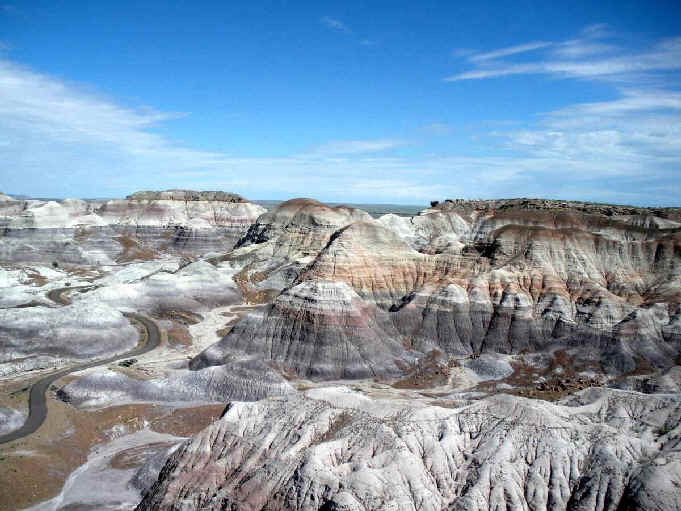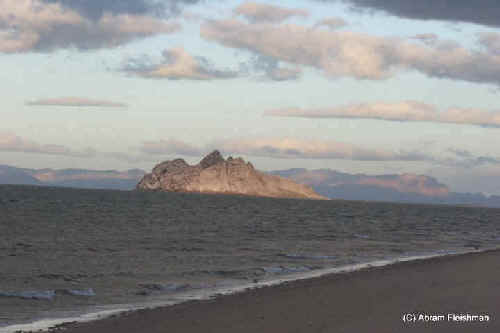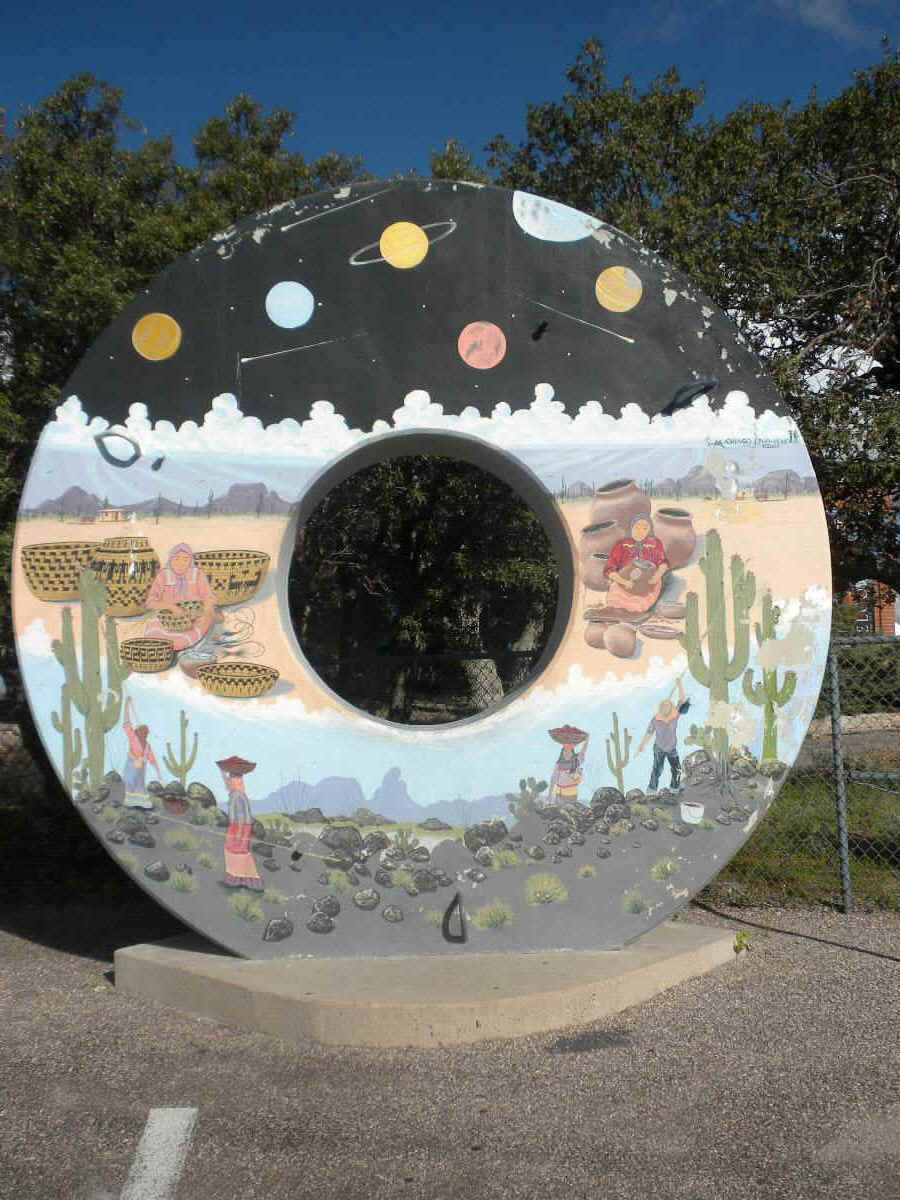
E-mail: font@focusonnature.com
Phone: Toll-free in USA 1-800-721-9986
or 302/529-1876
 |
PO
Box 9021, Wilmington, DE 19809, USA E-mail: font@focusonnature.com Phone: Toll-free in USA 1-800-721-9986 or 302/529-1876 |
From the FONT E-News, Volume 20, No. 8
September 2010,
relating to:
THE FOCUS ON NATURE TOURS IN ARIZONA & SONORA, MEXICO
in August-September 2011
including
the Grand Canyon, Painted Desert, Petrified Forest,
the southern Arizona birding hot-spots,
and some good birding locales in Sonora
including Kino Bay by the Gulf of California

An immature Broad-tailed Hummingbird
during a FONT tour in southern Arizona
(photo by Doris Potter)
Links:
Birds & Other Wildlife during FONT tours in Arizona, USA & Sonora, Mexico in Aug/Sep 2010
Photos
from the FONT Arizona & Sonora, Mexico Tours in Aug/Sep 2010
A List & Photo Gallery of Arizona Birds, in 2 Parts:
Part 1: Quails to Becard
Part 2: Flycatchers to Buntings
Mammals of Arizona (with some photos)
Amphibians
& Reptiles of Arizona
(with some photos)
Butterflies and Dragonflies &
Damselflies of Arizona
(with some photos)
Plants of the Desert &
Some Nearby Habitats
(with some photos)
Upcoming FONT Birding & Nature Tours in Arizona

During our
first tour in Arizona in August 2011,
we enjoyed our time along Route 66.
Along that historic road, we spent two nights
in Williams, south of the Grand Canyon.
(photos by Marie Gardner)

There were three back-to-back FONT tours in Arizona
and nearby Mexico (in Sonora)
in the late summer of 2010.
In mid-August, the first of these tours was in northern
and central parts of Arizona, with places visited including the Grand
Canyon, the Petrified Forest,
and the Painted Desert.

The Blue Mesa
at the Painted Desert
(photo by Marie Gardner)
Highlights, among the birds, during our first 2011 Arizona tour in August, included 3 California Condors seen closely as they flew above us, and a Prairie
Falcon on a telephone pole, perched near us.
The condors were at the Grand Canyon, which is, of course, itself
spectacular. The falcon was on Navajo land, near the Petrified Forest and
Painted Desert area which was a fascinating region to visit.
Among a nice variety of birds during this tour, in an enjoyable area of Arizona
to visit, there were others of note in addition to the condors and falcon,
including both Zone-tailed and Common Black Hawks and a large
flock of Pinyon Jays. In addition to the birds, there was a varied
assortment of mammals (including Pronghorn), butterflies,
and wildflowers and other plants.
Birds of the dessert that we saw nicely included the LeConte's Thrasher
and Abert's Towhee, in addition to a bird that's always a favorite, the Greater
Roadrunner.
During the last week of August 2010, our
next tour was mostly in two areas in the northern Mexican
state of Sonora.
One area was inland, in remote hills just west of the mountains known as the Sierra
Madre, at a ranch where we've stayed in the past.
Many Ocotillos were among the plants covered those hills, and in which of
course there were birds of various kinds. In canyons, birds included Rufous-capped
Warblers (we saw 3 at once) and Elegant Trogon.
Mammals included the big Antelope Jackrabbits that we saw,
and the Coyotes that we heard. There were more butterflies than
imaginable. And after the sun set, as we were no where near any populated area,
the stars in the sky above seemed to jump out at us.
The other particular area that we visited during this tour in Sonora
was a place along the Gulf of California
(also known as the Sea of Cortez). That
place, a great place for birds, was Kino Bay
(also called, in Spanish, Bahia de Kino).
It's a great place for birds as there are so many, with a large number of
species, and some of them were in large numbers. Notable among
the birds, for us, were both Blue-footed and Brown Boobies, Yellow-footed
and Heermann's Gulls, and Black Storm Petrels.
During one boat-ride, offshore, we circled and then visited an island called
"Alcatraz" where
there were only birds, thousands of them. And shells, and other
remnants of life washed up from the sea such as a whalebone, a head of a shark,
and the skull of a parrotfish. Swarms of Magnificent Frigatebirds were in
the air (at least a couple thousand). Around the periphery of the rocky island,
there were thousands of gulls, pelicans, and cormorants, and some shorebirds.
On the cliffs, and on the water and in the air nearby, there were the boobies.

Above: The island called
Alcatraz (or "Pelican")
that we visited when we went to the Sea of Cortez
during our August 2010 tour in Sonora, Mexico.
At the island, in addition to the many pelicans,
we saw both Blue-footed and Brown Boobies,
and swarms of Magnificent Frigatebirds,
Double-crested Cormorants, and Yellow-footed Gulls.
(photo by Abram Fleishman)
The other boat-ride in that area of
the Mexican coast of the Sea of Cortez was on the large estuary, where again
there were birds in the
thousands.
Among them, there were many godwits and curlews, sandpipers,
and long-legged waders of various sorts. In that area of Kino
Bay, during one afternoon, we saw as many as 7 species of terns.
It was so nice to see so much during our time by the sea.
During is the third of our three
consecutive tours in Arizona and northern
Mexico in the late summer of 2010,
it was, collectively, the hummingbirds that were the avian
stars, with 13 species of them seen, and one hybrid.
The hummers were: Broad-billed, Berylline, Violet-crowned,
White-eared, Blue-throated, Magnificent, Lucifer, Black-chinned, Anna's,
Costa's, Calliope, Broad-tailed, and Rufous.
One has the name Magnificent, but really, in their own way, they all are!
We saw Violet-crowned Hummingbirds at two places.
We saw more than one White-eared Hummingbird.
The male Anna's, as always, are exceptionally brilliant.
The Calliope was the smallest.
And the Costa's, the "desert hummingbird", was the last of our
hummers to be seen - a female. Males, "according to the books" wander
away in early September to be "elsewhere".
The Rufous Hummingbird, it is now known, is a hummer that truly wanders
on its little wings. From Alaska to Mexico, and some east to Florida and
elsewhere.
What fascinating birds the hummingbirds are!
What was particularly nice for us, in the "hummingbird department",
during our Aug/Sep 2010 tour, were both male
and female Lucifer Hummingbirds. That species now, by the way, has a new
name, the Lucifer Sheartail. Whatever its second name, as its
first name implies, it can be "a devil" of a bird to find. Again, we
were so glad when we saw it as well as we did.
The hybrid that we saw was a Costa's-Anna's.
Another highlight of the tour that we saw so well was not a bird. It was a Bobcat,
that we saw during the day, as it was "perched" mostly behind foliage
by a large branch in a small tree.
Close to us it was, and not ever moving away, even as it was photographed from
various positions. Its eyes followed our movements, and as its head turned we
saw its wonderful long white whiskers.
What an encounter it was for us, that sunny morning, prior to our actually
leaving the Bobcat where it was, still resting in the small tree.

Kitt's Peak - Arizona August
2010
(photo by Rise Hill)

Kitt's Peak Observatory
(photo by Rise Hill)